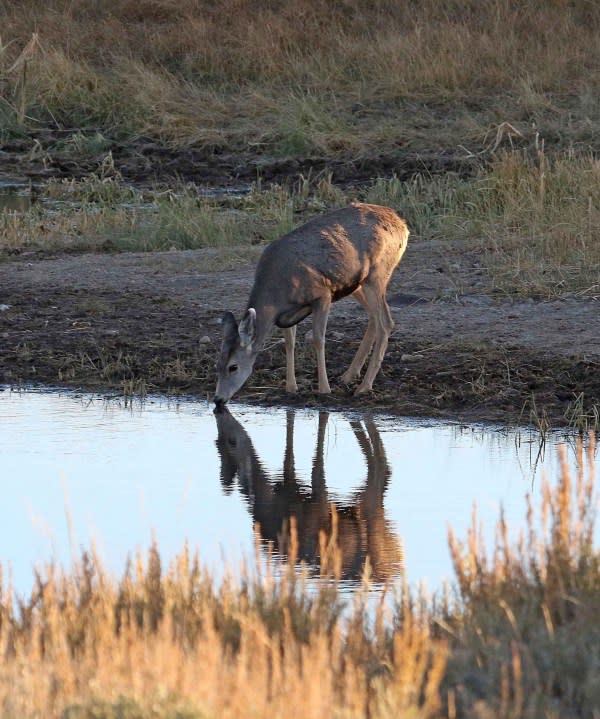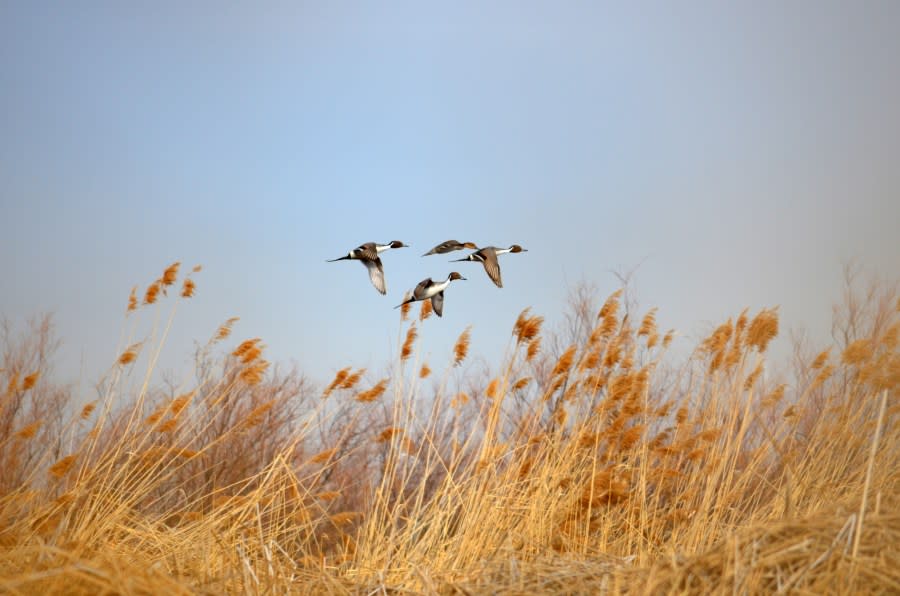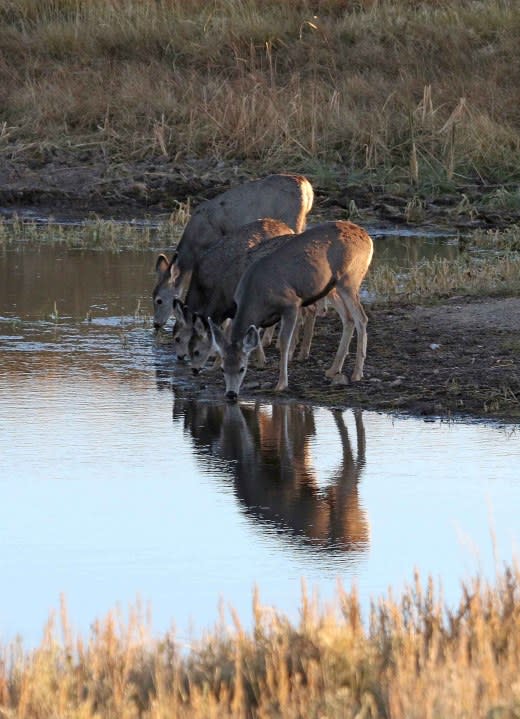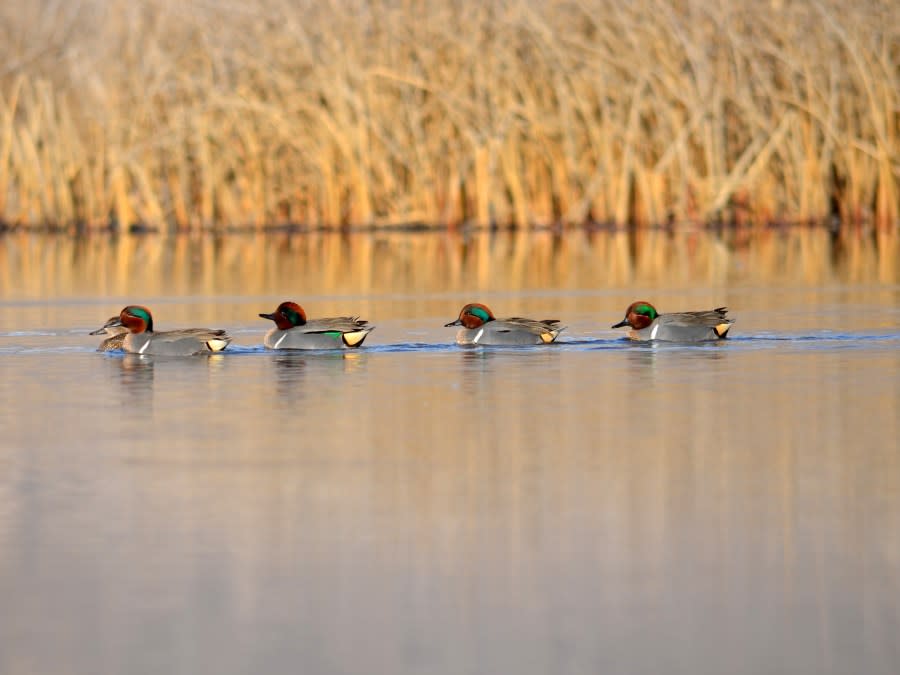Six ways you can help wildlife this Earth Day

SALT LAKE CITY (ABC4) — In honor of Earth Day next week, the Utah Division of Wildlife Resources says it’s a great time to think about what you can do to help restore and preserve nature. They shared tips to keep in mind not just for Earth Day, but all year long.



Report reptile/amphibian and bird sightings
DWR said that one way you can help wildlife is by taking pictures of species from a safe distance, such as reptiles and amphibians, and submitting them to platforms designed for recording sightings, such as the iNaturalist app.
The Herps of Utah group, which you can find through iNaturalist, is a project created to ensure that location data attached to submissions can be integrated into Utah’s database. Joining this group can ensure your contributions are reviewed and used to inform conservation decisions for local species in Utah.
“Community science observations provide very useful data that can be used to help us monitor native animals,” Utah Division of Wildlife Resources Native Herpetology Coordinator Alyssa Hoekstra said. “Reptiles and amphibians in particular are usually only active at certain times of the day and year. Records that are added to the Herps of Utah group can help us gather information over a broad period of time and over a large geographic range. This helps us to capture data points that could have otherwise been missed.”

DWR also recommends reporting year-round bird sightings to eBird, which helps biologists and researchers know where and when birds are migrating and how their populations may be doing.
You can also join other bird projects and surveys including the North American Breeding Bird Survey, the Christmas Bird Count, or Project FeederWatch.
Reduce Plastic Use
DWR said litter and trash can harm wildlife, such as causing digestive issues or fatalities if eaten. Trash and food scraps thrown out of cars can attract more wildlife to the sides of roads, which DWR said can increase the likelihood of collisions. Fish and wildlife can also get caught in trash and debris, which can impact their mobility and result in death. Litter can also have negative impacts on habitats.
DWR said to avoid these situations, always dispose of trash properly, and reduce your use of single-use plastics, such as bags, bottles, wraps and disposable utensils.
Turn off outdoor lights at night and increase window safety
DWR said that bird species migrate and different times of the year, many when it’s dark at night.
They said that thousands of birds die each year from flying into windows on buildings and that adding screens, film, pain or string spaced no more than two inches high or two inches wide can help protect them.
DWR also recommends turning off outdoor lights at night.
“Light pollution can disorient birds and draw them off course, and sometimes can cause collisions with lighted buildings and other structures,” DWR Avian Conservation Program Coordinator Russell Norvell said. “Artificial light has also been shown to impact frogs and other animals, especially during their breeding season. Light pollution can impact the frequency and timing of mating calls and the activity or movement of nocturnal species. Additionally, loud noises after dark can interrupt or impact the mating calls of frogs, which could eventually lead to population declines.”
Don’t feed wildlife

DWR said that although it’s not illegal to feed wildlife, except in certain cities that have enacted no-feeding ordinances, it is highly discouraged. Feeding wildlife, DWR said, can cause public safety concerns, the spread of chronic wasting disease among deer, elk, moose and avian influenza among waterfowl and raptors. It also can lead to potential harm to wildlife from introducing them to foods not in their diets.
Feeding wildlife can also draw them to private property and other residential areas, habituating them to return to those spots, which can cause nuisance issues and property damage.
Don’t move or transfer fish or wildlife
According to DWR, transferring aquatic animals between different bodies of water or using live bait is illegal, can spread disease, and increases the risk of invasive species in an area. DWR said you should not transfer wildlife that isn’t regulated or that you don’t have a license to collect. Instead, they recommend leaving wildlife alone and cleaning off your boots and equipment if you visit more than one aquatic site in one day.
Buy a hunting or fishing license
DWR said that hunters and fishers are some of the greatest wildlife conservationists as they provide a large amount of funding that is used for preserving wildlife species. When someone buys a hunting or fishing license in Utah, DWR said that 100% of their license dollars go toward the organization’s work to conserve and protect the state’s fish and wildlife.
Visit the DWR website to buy a fishing, hunting or combination license.
For the latest news, weather, sports, and streaming video, head to ABC4 Utah.

